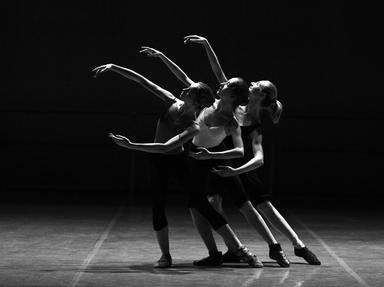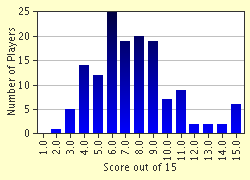Quiz Answer Key and Fun Facts
1. Enrico Cecchetti was born in the dressing room of a theatre in 1850. Where was he born?
2. Which famous role did Cecchetti create?
3. Where did Cecchetti spend his first years as a teacher?
4. With which famous company was Cecchetti the Ballet Master between 1910 and 1918?
5. The legendary choreographers Fokine and Massine, and dancers Pavlova and Nijinsky, were all students of Enrico Cecchetti.
6. For which quality are Cecchetti-trained dancers particularly known?
7. Cecchetti dancers make more frequent use of 'épaulement' than dancers trained in other styles. Which part of the body is involved in this?
8. Cecchetti's work was first recorded and published by dance historian Cyril Beaumont in 1922. What was the name of the organisation set up in the same year, with the aim of preserving and promoting his theories and techniques?
9. Cecchetti's classes for professional dancers were identical every day.
10. In the Cecchetti method, what name is given to the arm position where both arms are raised above the head, and held in a rounded and graceful manner, palms facing downwards?
11. Imagine the following position. The dancer stands facing wall 6 (sideways on to the audience). The left leg is supporting and straight, and the right leg, also straight, is raised at an angle of 90 degrees behind her. The left arm is raised forward, at a level with her eyes. Where must the right arm be placed in order to make this a correct Cecchetti Third Arabesque?
12. Cecchetti invented the system of assigning fixed points to the performance space. This enables dancers to correctly follow instructions of an exercise or a sequence. If the downstage corner to the right of the dancer is number 1, where is 4?
13. The Adage is an important part of any ballet class, and Cecchetti's lessons were no exception. He set down dozens of these slow, graceful exercises, requiring balance and strength. How does every single one start?
14. Cecchetti named a step after his cat.
15. The following step is an impressive leap, performed by all Cecchetti dancers. Facing upstage, the dancer leaps from the left leg, raising the right leg to the front in a swift movement, and lifting both arms above her head. Instead of leaping forwards, the dancer then quickly whips around to face the opposite direction, bringing the right leg down to land, and swiftly raising the left leg behind her. What do Cecchetti dancers call this?
Source: Author
Elanor
This quiz was reviewed by FunTrivia editor
fringe before going online.
Any errors found in FunTrivia content are routinely corrected through our feedback system.

